STEP FIVE
THE TWO VANISHING
POINTS
THE “HEIGHT” LINES

THE TWO VANISHING POINTS
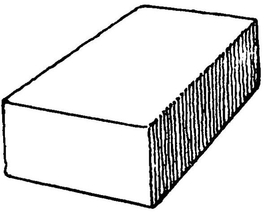
Place the brick flat on the table so that three of its sides can be seen.
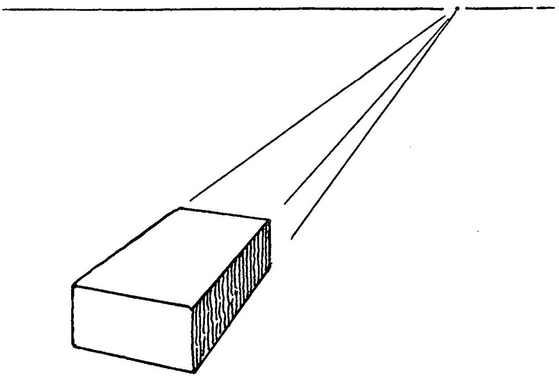
Now we have three lines which can be extended, thus locating the vanishing point and the eye-level.
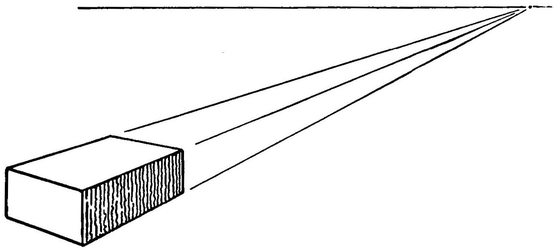
After locating the point and line turn the brick a trifle more.
This changes the vanishing point, but the eye-level is still the same.
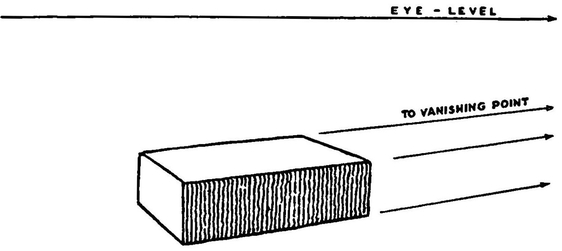
The more we turn the brick the more the vanishing point changes, but always along the same eye-level.
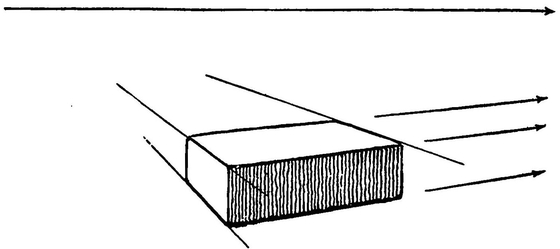
But wait!
Here is another set of parallel lines representing the width of the brick.
Let us extend these and see what happens.

Here lies the brick just as before with its length lines extended to a vanishing point and the eye-level line passing horizontally through this point.
The width lines also meet at a point which lies on the very same eye-level line as the point reached by the length line.
This must be as we see it because, when we glance at the three sides of the brick as it lies there on the level surface, our eye-level remains unchanged whether our attention is fixed on one group of parallels or on the other.
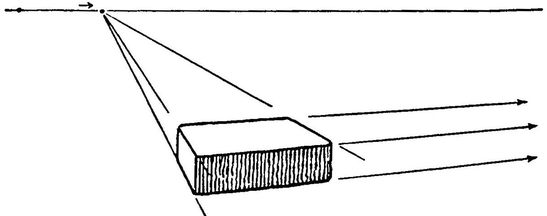
Turn the brick some more and we find that our first vanishing point moves away from the brick along the eye-level while the new point moves toward the brick.
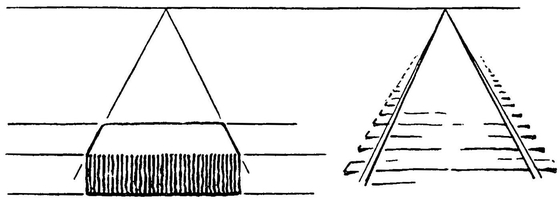
When the point comes directly above the brick we again have the railroad track with one set of receding parallel lines. The other set is parallel with the horizon. The latter can also be considered as parallel with the picture plane if we prefer that viewpoint.
THE PERPENDICULAR LINES
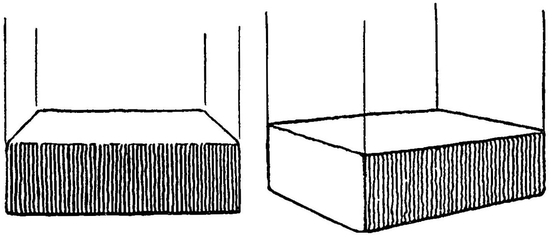
Now let us consider the “height” lines. This is easy.
The third set of parallel lines or the “height” lines may be drawn straight up and down with no vanishing point to consider.
This is true because the “height” lines cut across our picture and we always see only this small segment of them no matter how far they may be extended up or down. The “height” lines might be compared with the upright mullions or bars of a window through which we look.
REMEMBER
All of a set of parallel lines in perspective meet at a point.
This point moves along the eye-level line when the object is turned.
The other set of parallel lines meet at another point.
Both points are on the eye-level line.
Height lines are up-and-down with no vanishing point.
PROBLEMS
Draw a book lying on the table.
Turn the book so that it lies in a different position and redraw.
Notice how the two vanishing points rearrange themselves each time the position of the book is changed.
Stand a brick on end and sketch it in this position. Show the direction of the “height” lines. Do they meet at a point?